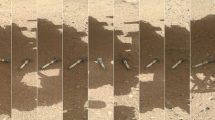
Hughes has announced the successful launch of its Hughes 63W Ka-band hosted payload on the Telstar 19 VANTAGE (Telstar 19V) satellite.
With this new High-Throughput Satellite (HTS) capacity over South America, Hughes will offer HughesNet broadband services to businesses and residences, managed network services to enterprises, cellular backhaul to mobile network operators and community Wi-Fi solutions to enable governments to bridge the digital divide.
Built by Space Systems Loral (SSL) for Telesat, a global satellite operator, the Telstar 19V was launched aboard a SpaceX Falcon 9 rocket from Cape Canaveral, Florida.
Pradman Kaul, President and CEO of Hughes, said: “With the launch of Hughes 63W, Hughes reaffirms its commitment to powering a connected future for people and businesses in Brazil, Chile, Colombia, Ecuador and Peru.
“To enable this HTS capacity, we are also opening new gateways in Brazil and Chile, which will complement our five Jupiter System gateways in the U.S. in meeting the increasing demand for connectivity across the Americas.”
Hughes will deploy its next-generation Jupiter System technology for the ground system and customer premises equipment to deliver broadband services on Hughes 63W. The Jupiter System supports a wide range of applications including consumer and small- and medium-sized business (SMB) broadband internet service, community Wi-Fi, cellular backhaul, managed network services and mobility, including aeronautical services.
Hughes 63W brings substantial capacity to five countries in Latin America, reaching more than 90% of people in Chile, Ecuador and Peru. In Brazil, where HughesNet satellite Internet service is already available via Hughes 65W capacity, the new payload will complement the existing service and offer connectivity to more than 90% of Brazilians. In Colombia, the new Hughes 63W capacity will enhance the broadband connectivity provided via the company’s Jupiter 2 satellite to reach more than 96% of Colombians.
Services on Hughes 63W are expected to begin in early fourth quarter 2018, after Telesat and SSL complete orbit-raising and in-orbit testing of Telstar 19V.












Add Comment